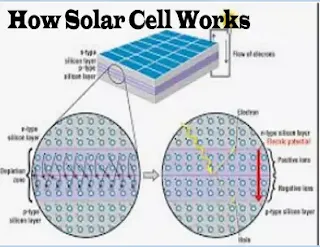Solar Panels
Solar
panels require silicon for the inclusion of light. Silicon does not come
inexpensive. This cost-factor is avoiding people from using solar energy on a
large scale. Scientists utilize another substance i.e. ruthenium for solar
cells. Ruthenium can is despicable than silicon but ruthenium is a rare metal
on Earth. It is as uncommon as platinum. Naturally, it cannot be available for
mass production. Contrast to silicon, carbon is cheap and plentiful. The
graphene, another structure of carbon, is capable of absorbing an extensive
range of light frequencies.
Graphene
is a single sheet of carbon, one atom substantial. Graphene has prospective
potential to be utilized as a successful, a smaller amount of toxic and cheaper
than other substitutes for solar cells. Chemists at Indiana University
Bloomington are endeavoring to come about with an improved alternative than
silicon. If successful, this can be a path-breaking innovation.
Individuals Keen Interests
Other
people also obtain this proposal for using carbon sheets for solar power.
However, they meet some obstacles. They use the graphene method of carbon for
solar cells. Graphene is similar to graphite used in pencil lead. Graphene
absorbs a wide range of light frequencies. Scientists have established and
found large sheets of graphene to be also impossible to work with. Large sheets
are steamy and get attached to other sheets. Now Indiana University Bloomington
researchers studied and are an attempt to deal with this difficulty. They are
trying to develop non-sticky graphene sheets that are steady.
They
are placing their productiveness on ascribing a semi-rigid, semi-flexible,
three-dimensional side group to the sides of the graphene. They know how to obtain
energy from carbon. Now chemists from Indiana University Bloomington are
graduating to the next logical step i.e. conversion of that energy into
electricity. If the whole thing will turn out okay then carbon can be a
substitute to costly silicon and ruthenium, which is as unusual as platinum.
Experts Endeavors
Chemists
and engineers carry on trying to work out a solution for the stickiness of
graphene. They developed numerous techniques for keeping single graphene sheets
separate. In anticipation of currently, the maximum well-organized and
effective solution aforementioned to the Indiana University Bloomington
scientists experiment has been splitting graphite (top-down) into sheets and
enfold polymers around them. Nevertheless, this technique has its own
drawbacks.
These
graphene sheets are excessively large for light absorption for solar cells.
Indiana University chemists devised an entirely new technique for carbon
sheets. They utilized a 3-D bramble patch between the carbon sheets. This
method assists the scientists to soften and dissolve sheets containing as many
as 168 carbon atoms.
They
are flourishing in making the graphene sheets from smaller molecules
(bottom-up) so that they are homogeneous in size. Until now, it is the major
stable graphene sheet ever made with the bottom-up advance. Chemist Liang-shi
Li, who led the study, inform us, our interest stems from wanting to find an
alternative, readily available material that can efficiently absorb sunlight.
Currently, the greatest common materials for absorbing light in solar cells are
silicon and compounds holding ruthenium. Each has disadvantages.
Professional Views
Li
is of the view; harvesting energy from the sun is a prerequisite step. How to
converting the energy into electricity is the following. We consider we have a
worthy start. Additional affiliates of the development group are Ph.D. learners
Xin Yan and Xiao Cui and postdoctoral fellow Binsong Li. The National Science
Foundation and the American Chemical Society Petroleum Research Fund sponsor
this project.








0 Comments
Dear Visitors: Please do not enter any spam link in the comment box. Thank you!